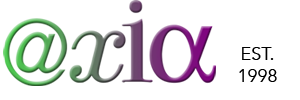by Dr. Luke Beardon
Published by Sheldon Press
“No one is a little bit Autistic”
Despite one of this books “5 star reviews” on Amazon writers claiming to have read the book in two hours, and that they were looking forward to reading it again, I found it took me 3 days to read. One could perhaps partially attribute my taking so long to read a hundred and odd pages to my being a slow reader, or my different mental processing due to being autistic, or it COULD be because Dr Beardon’s book did precisely that which he intended it to do – it caused me to THINK!
“Never believe anything you read about autism.” ???
The 2nd of the 12 Chapters describes more of “what autism ain’t” than “what autism is”, presenting the misnomers, misconceptions, misunderstandings (“…Miss whatever-her-name is, and say I’m sorry” – SORRY, that’s a great line from an old Hothouse Flowers song that just came into my head!!!) which people have, and do, hold in their heads about autism. He goes on to “define autism” neurologically which I interpret as being a “distinction in thought processes”, and reaffirms my belief in the “you are or you’re not” model he convincingly argued during his presentation “Exploding the Myths of Autism” which I had witnessed.
The 3rd chapter on social relationships provides numerous examples of how situations can be both interpreted and experienced very differently by what Luke refers to as “PNT’s”, Predominantly Neuro-Typical compared to the “Autistic Person”… or should that be “Person with Autism”… Dr Beardon’s Introduction introduced to me the apparent reality that there was a “person first” debate within the autistic community?!? I confess this was a shock to me and I had to stop and think about it!
I could go through the chapters one by one commenting on the thoughts this book inspired, however I’m still trying to regain my balance aft reeling from reading Chapter 7 “Diagnosis, Understanding and Identification of Self”. For me as a Self Professed and Self Proclaimed “Philosopher”, this chapter I found to be deeply profound. Yes, you can go on to read following chapters of insightful and possibly practical information on education, employment, “close relationships” and parenthood, even a few pages on the criminal justice system, before the final chapter celebrating autism, but personally I CAN’T stop thinking about “Chapter 7”…
I remember discussing with Luke my own “problem” with the word “Identity” and it’s derivatives (due to my own “cultural biases” and environmental conditioning I guess) and my preference for “category”, however there appear to be a contingency who take offence at being “categorised” (I wonder if they are also part of the “first person” brigade?!? <chuckle>). This may only appear as a “semantic issue” to some, but for me personally (and I am perhaps “close to being alone” in thinking this), there is a notion of “you are identified by what you identify with”, and that is not the same as a “pigeon hole” category used for the purposes of recognition.
Out of all the amazing information and insight “Autism and Asperger Syndrome in Adults” contains, I feel guilty that I can’t provide anyone reading this review with a brief synopsis and overview, but I also realise that I would be aiming for the impossible and doing a disservice to Dr Beardon, defeating the whole purpose of the book (from my perspective of course!).
If you are autistic, you may feel like the book has been written directly towards you at times, whilst if you are “Normal” – sorry, a PNT – then Dr Beardon’s gathering of data and experience over decades may assist one into, what appears to me, a genuine insight of the “autistic mindset”.
I fully intend to rate this book 5 stars on Amazon (when the copies I ordered from there for my mother and sister have arrived!!!).
Share This Post:








Amazing review, thank you so – so – much.